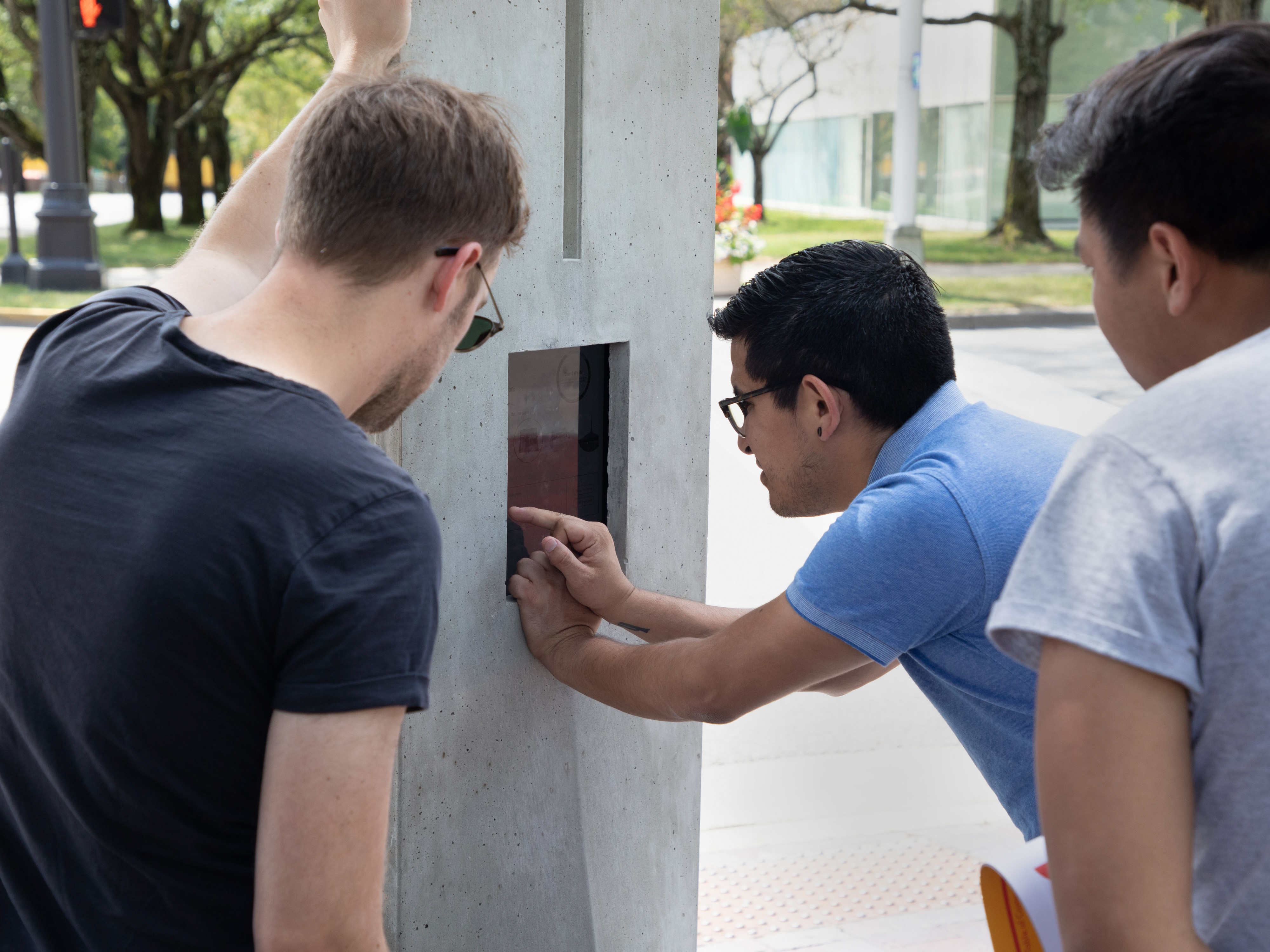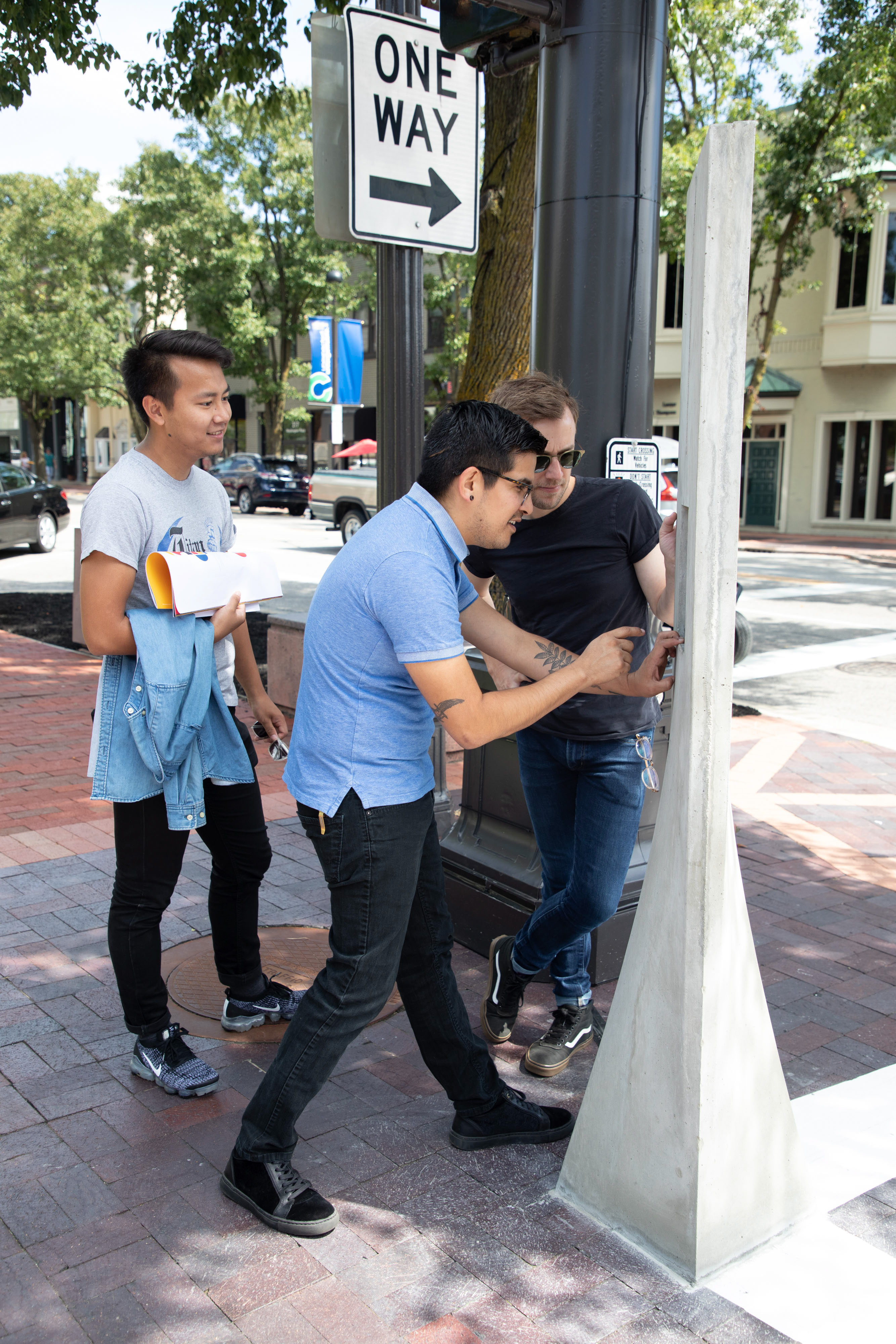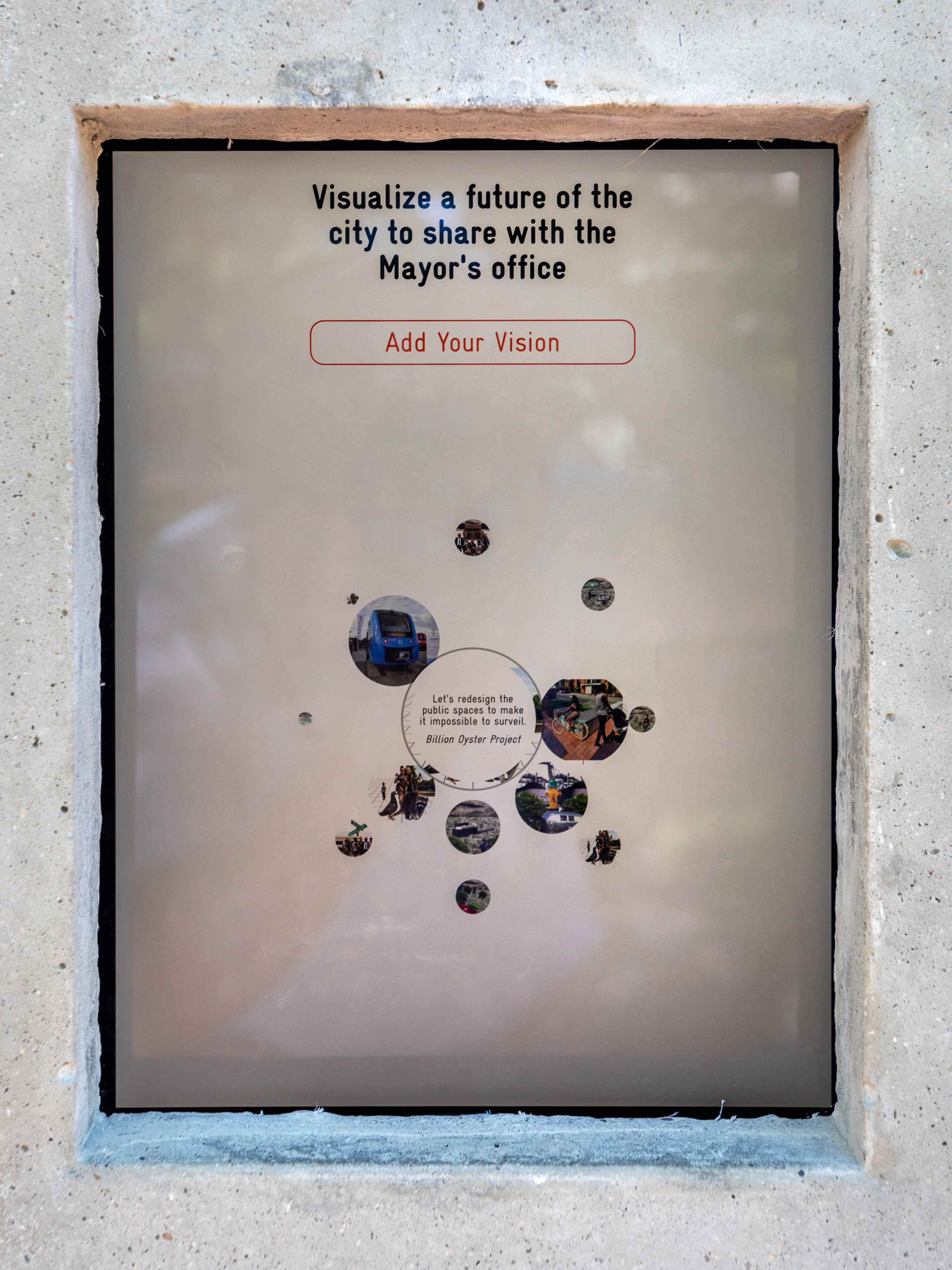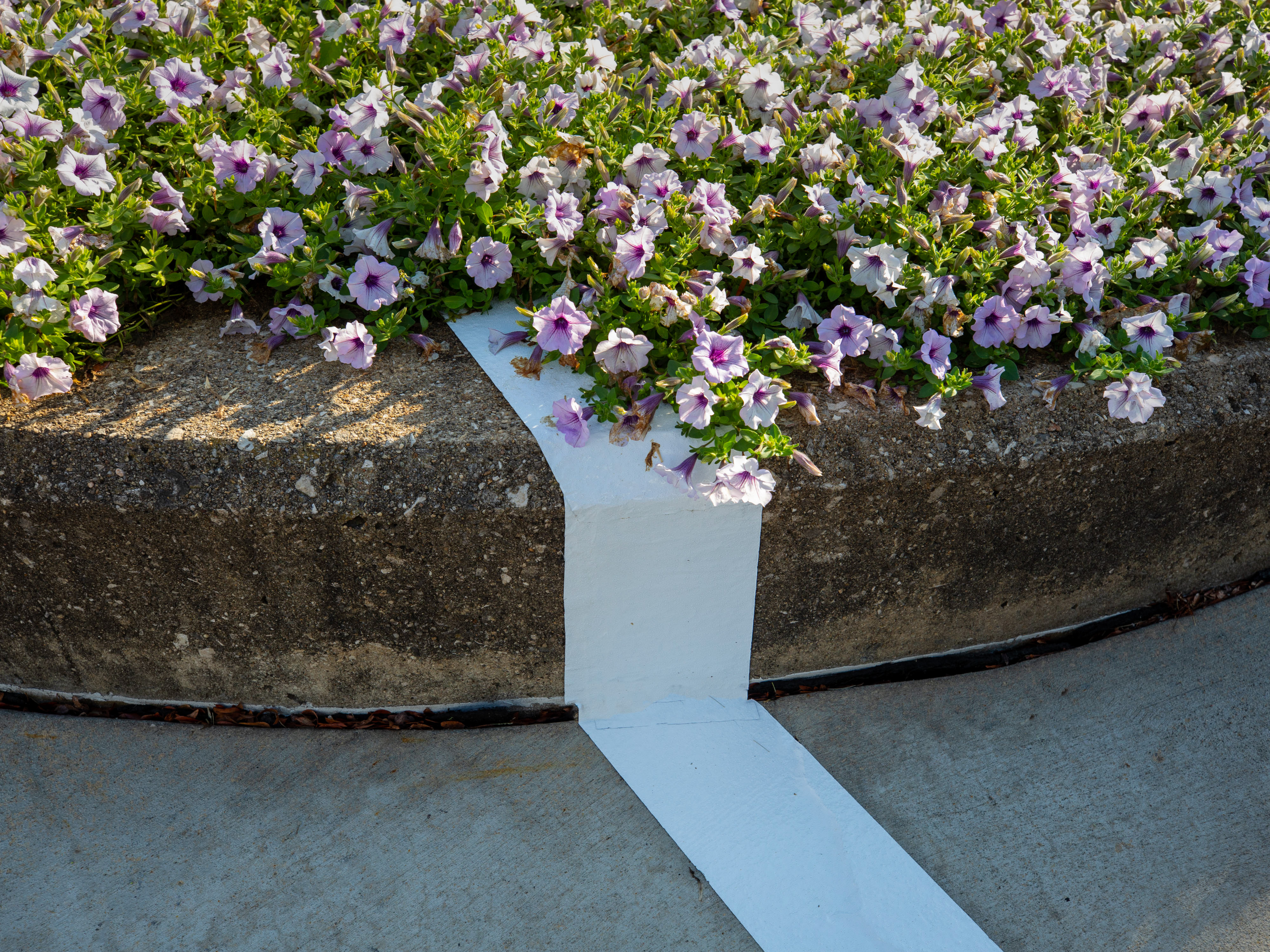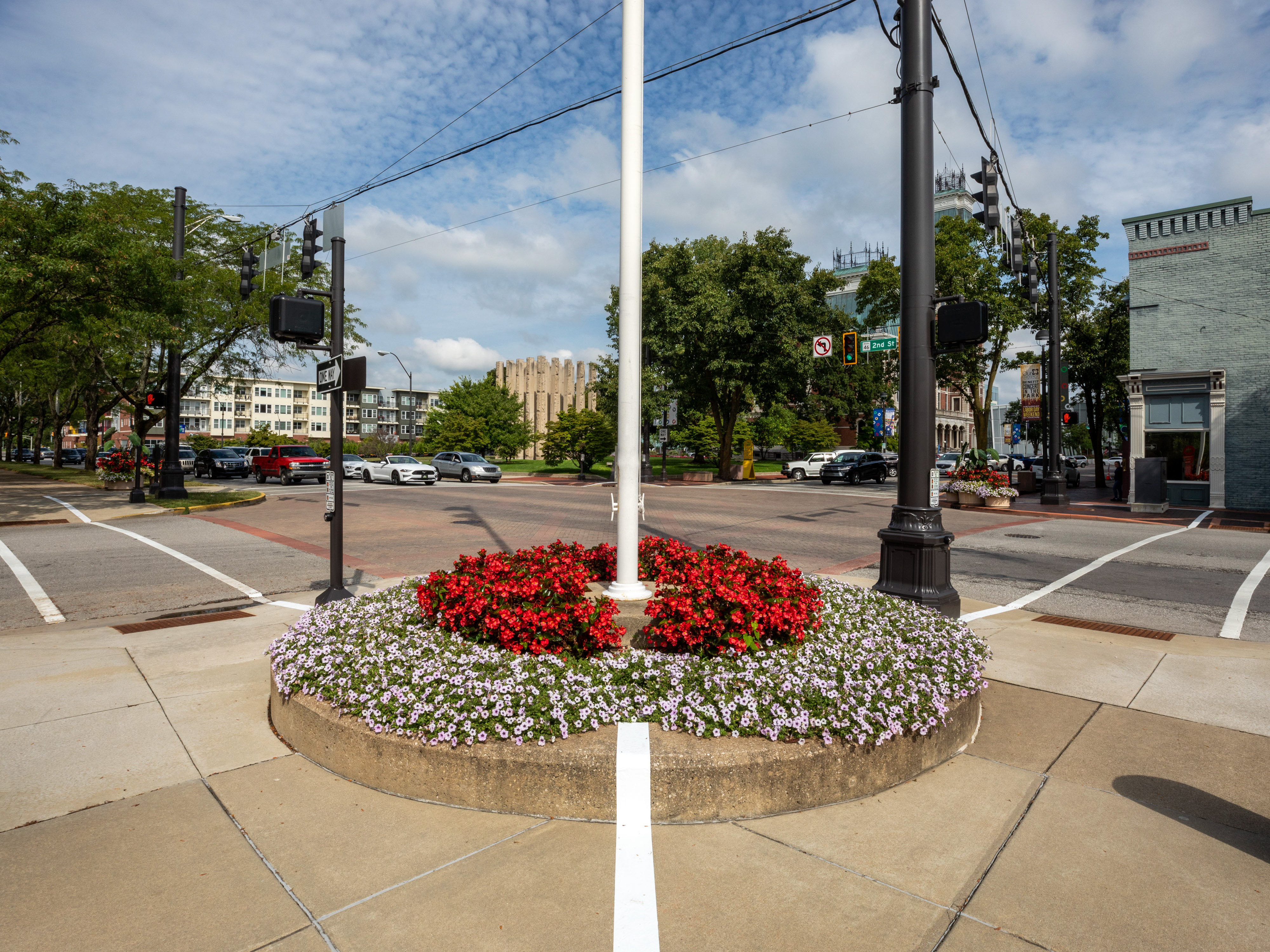Futures Gazing, 2023
Deep Science Ventures (DSV) is redefining how deep tech companies are born through their distinctive "scoping" methodology. Unlike traditional "tech push" approaches that start with a technology seeking a unique opportunity space, DSV's process begins with a clear societal outcome and works backward. Their founders first define the change they want to create, then thoroughly explore the problem space from multiple angles before identifying the optimal technological solution.
When DSV launched their innovative Venture Science Doctorate program—designed to teach PhD candidates how to transform their research into impactful companies—they partnered with The Extrapolation Factory to bring their curriculum to life. Our challenge was to create six immersive, playful experiences that would introduce candidates to each phase of DSV's rigorous scoping methodology.
By applying a design futures lens to DSV's proven approach, we translated their company-building framework into an engaging educational journey. Each experience was carefully crafted to help doctoral candidates understand and internalize the principles that make DSV's methodology so effective at creating meaningful technological breakthroughs.
When DSV launched their innovative Venture Science Doctorate program—designed to teach PhD candidates how to transform their research into impactful companies—they partnered with The Extrapolation Factory to bring their curriculum to life. Our challenge was to create six immersive, playful experiences that would introduce candidates to each phase of DSV's rigorous scoping methodology.
By applying a design futures lens to DSV's proven approach, we translated their company-building framework into an engaging educational journey. Each experience was carefully crafted to help doctoral candidates understand and internalize the principles that make DSV's methodology so effective at creating meaningful technological breakthroughs.
Project Lead: Chris Woebken
Design Lead: Grace Mervin
Game Design: Saralee Sittigaroon
Commissioned by Deep Science Ventures (Aaron Appleton, Eirini Malliaraki)



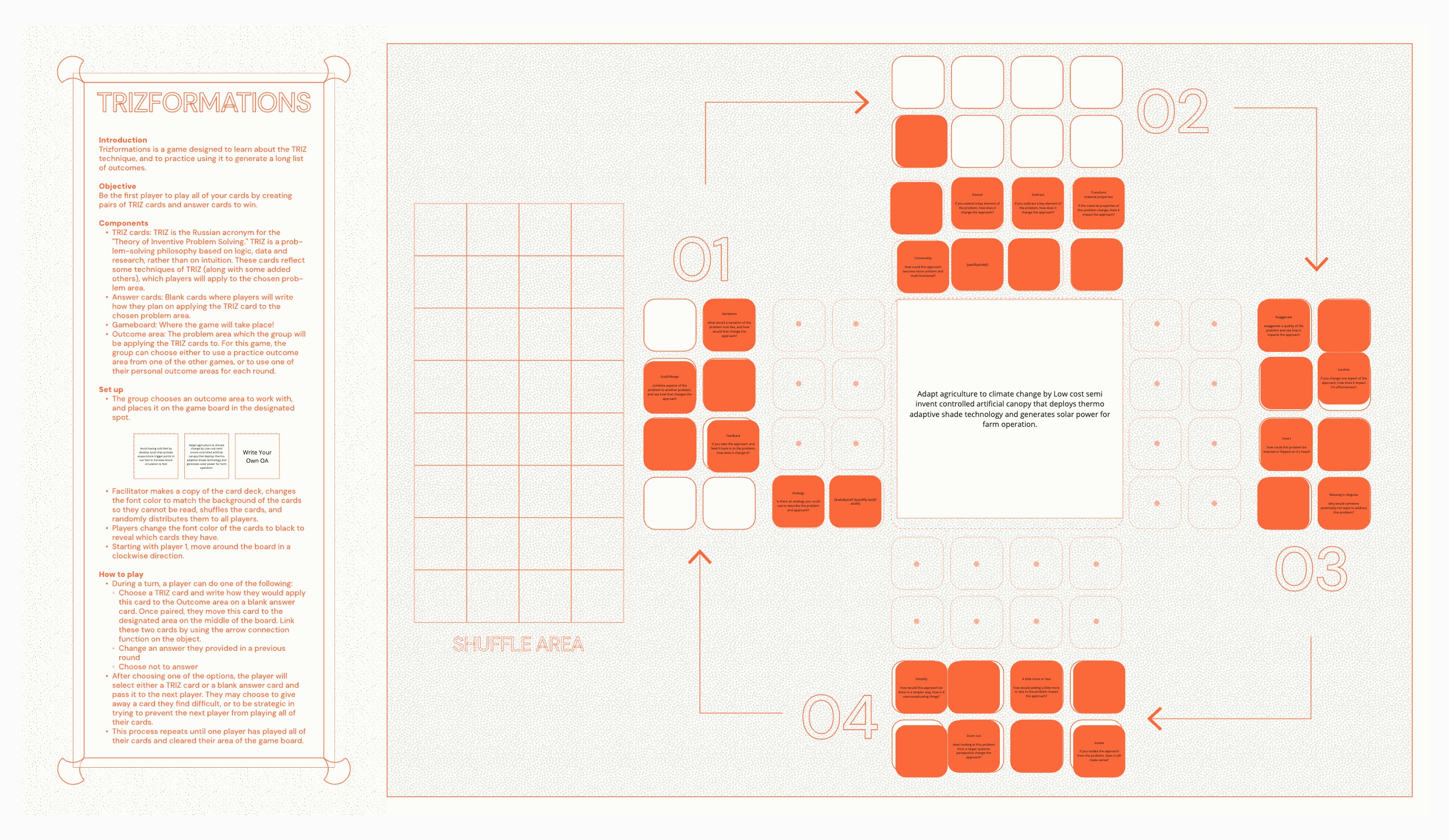
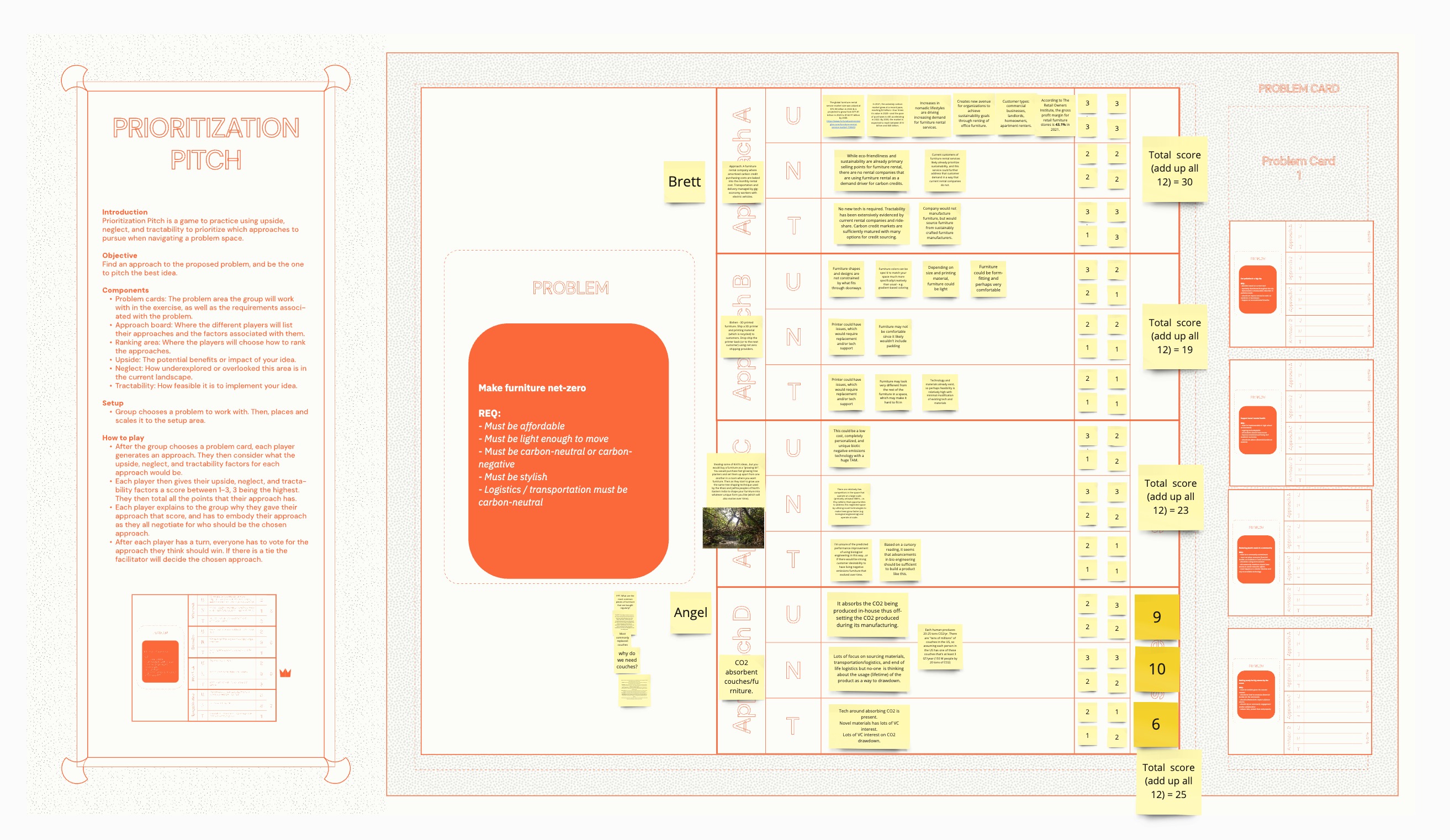

Climate Futures, 2021
“What kinds of climate action do the next generation envision?”
This is the question that led the CLIMATE FUTURES project. A group of roughly 30 youth from Bronzeville and Rockford were invited to take part in a future-visioning program, inspired by techniques used by professional futurists. Through the project, they dreamed up social and technological inventions that respond to climate change in ingenious and resourceful ways.
Each student group was first introduced to fundamentals of climate science, and then heard from experts in climate justice and energy technology. Following that, students looked for signals of change, mapped out consequences of those signals, and depicted their imagined futures as quotidian streetscapes in their neighborhoods.
The Extrapolation Factory translated the student visions into the life-size objects. The project aims to increase awareness about the consequences of climate change, empower youth to express their hopes and dreams for the future of their community, and engage the community in a new conversation about climate change and energy transitions.
“What kinds of climate action do the next generation envision?”
This is the question that led the CLIMATE FUTURES project. A group of roughly 30 youth from Bronzeville and Rockford were invited to take part in a future-visioning program, inspired by techniques used by professional futurists. Through the project, they dreamed up social and technological inventions that respond to climate change in ingenious and resourceful ways.
Each student group was first introduced to fundamentals of climate science, and then heard from experts in climate justice and energy technology. Following that, students looked for signals of change, mapped out consequences of those signals, and depicted their imagined futures as quotidian streetscapes in their neighborhoods.
The Extrapolation Factory translated the student visions into the life-size objects. The project aims to increase awareness about the consequences of climate change, empower youth to express their hopes and dreams for the future of their community, and engage the community in a new conversation about climate change and energy transitions.
Project credits:
Photography: Daris Jasper (Bronzeville) and Martín Hernandez (Rockford)
Site design + 3D Texturing: Albert Johnson
Concept designers: Youth at Boys & Girls Club of Rockford and Chicago (Bronzeville)
Design Assistance: Heer Mehta
Generous support by ComEd
Facilitation + Production: Extrapolation Factory
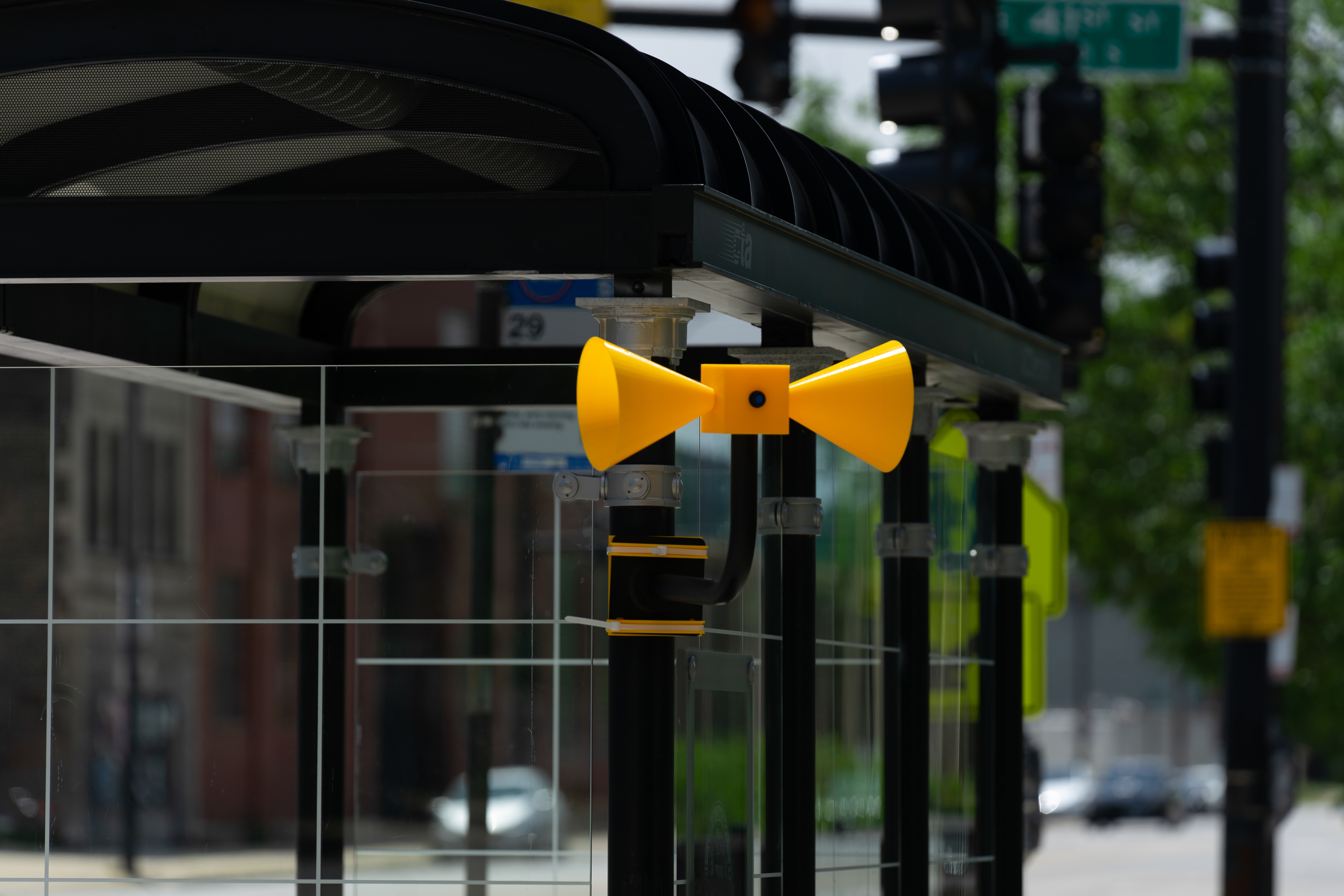
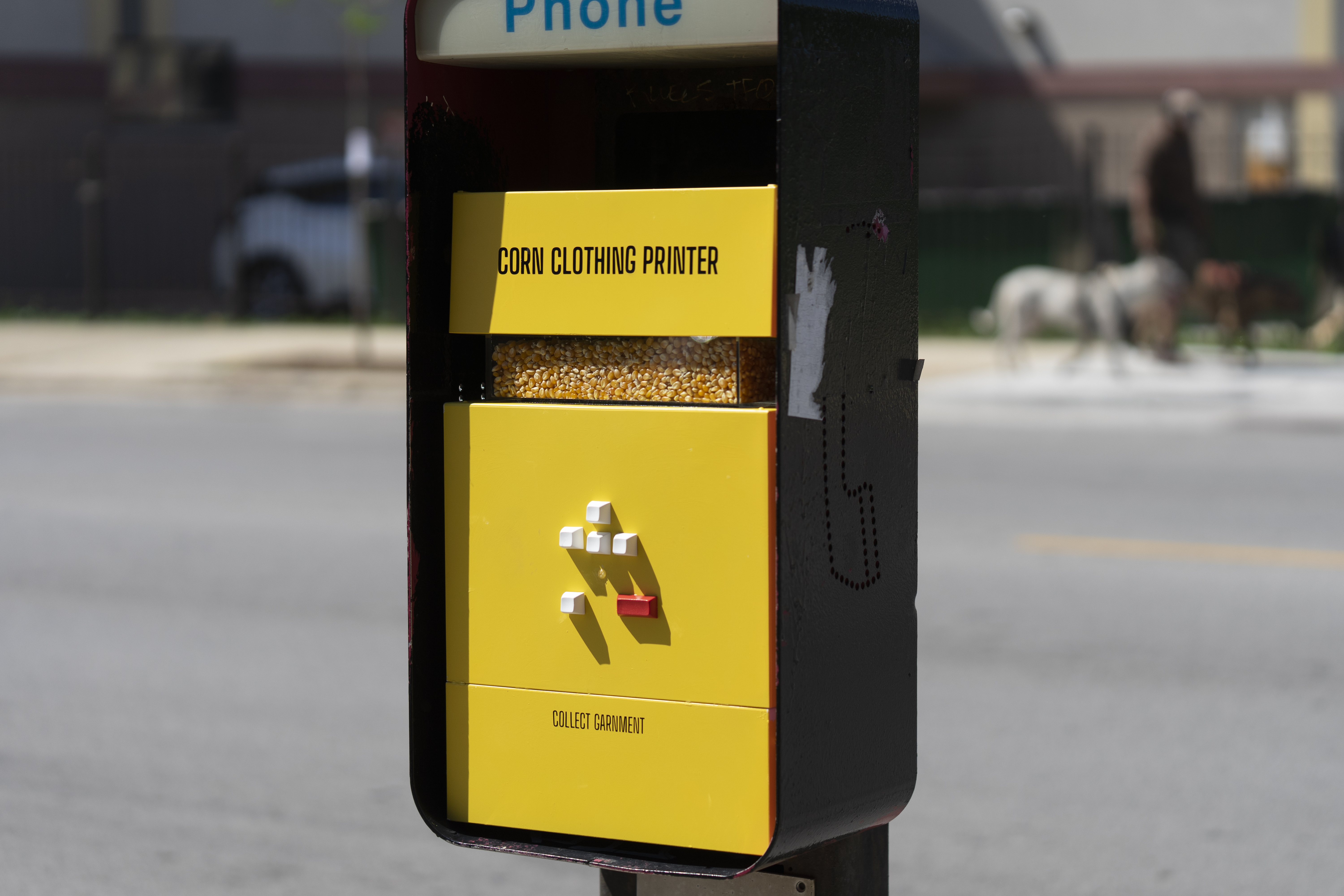
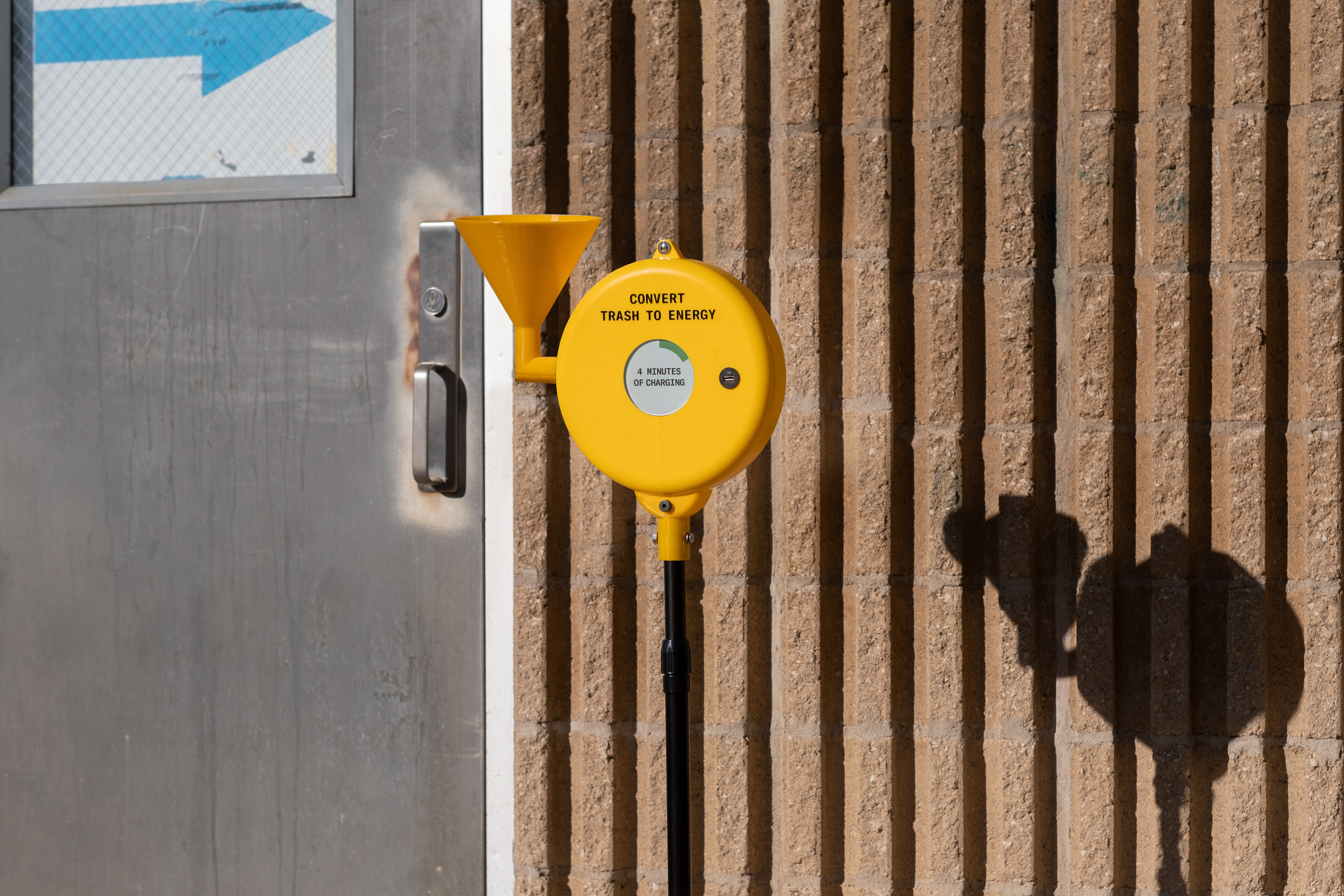

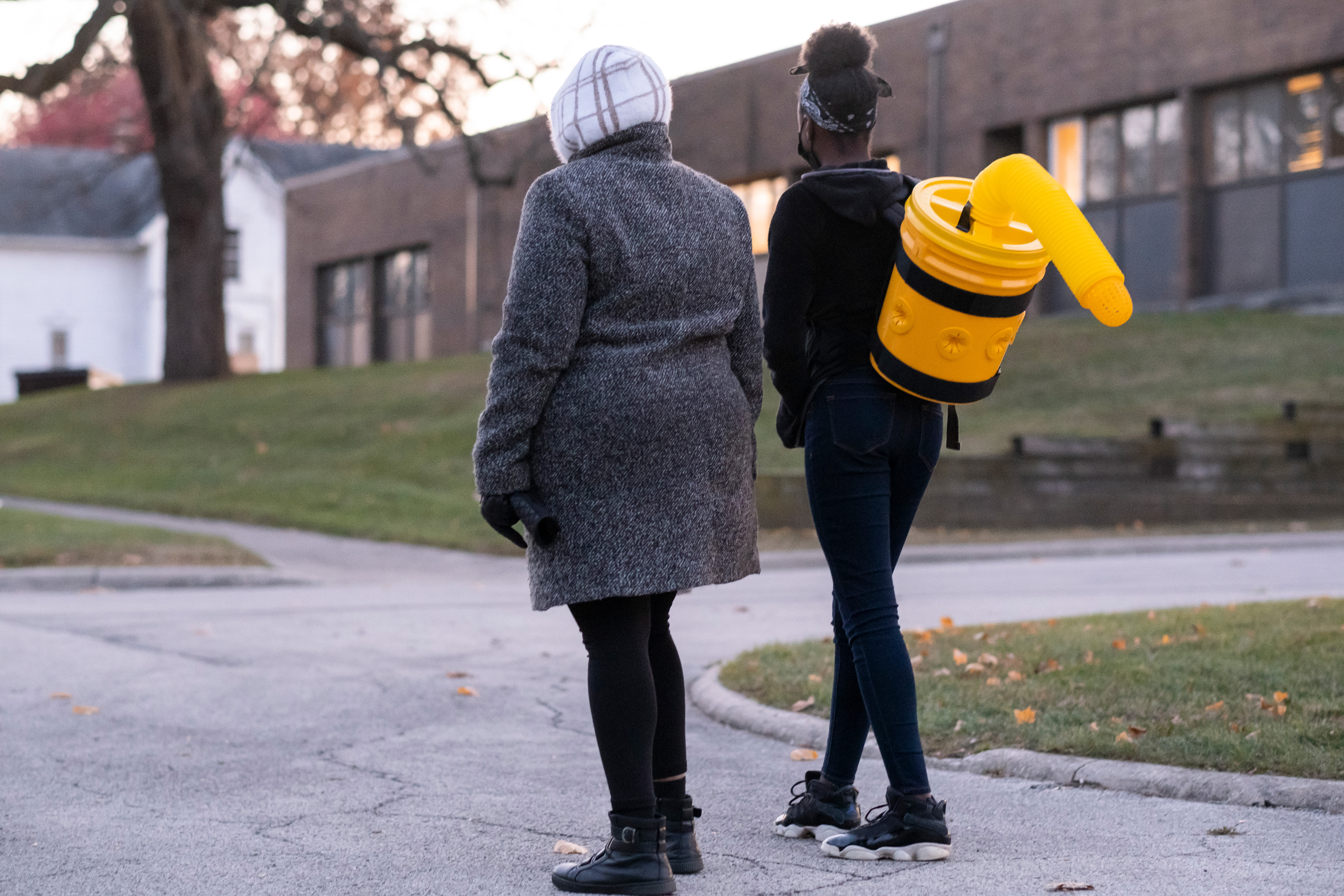
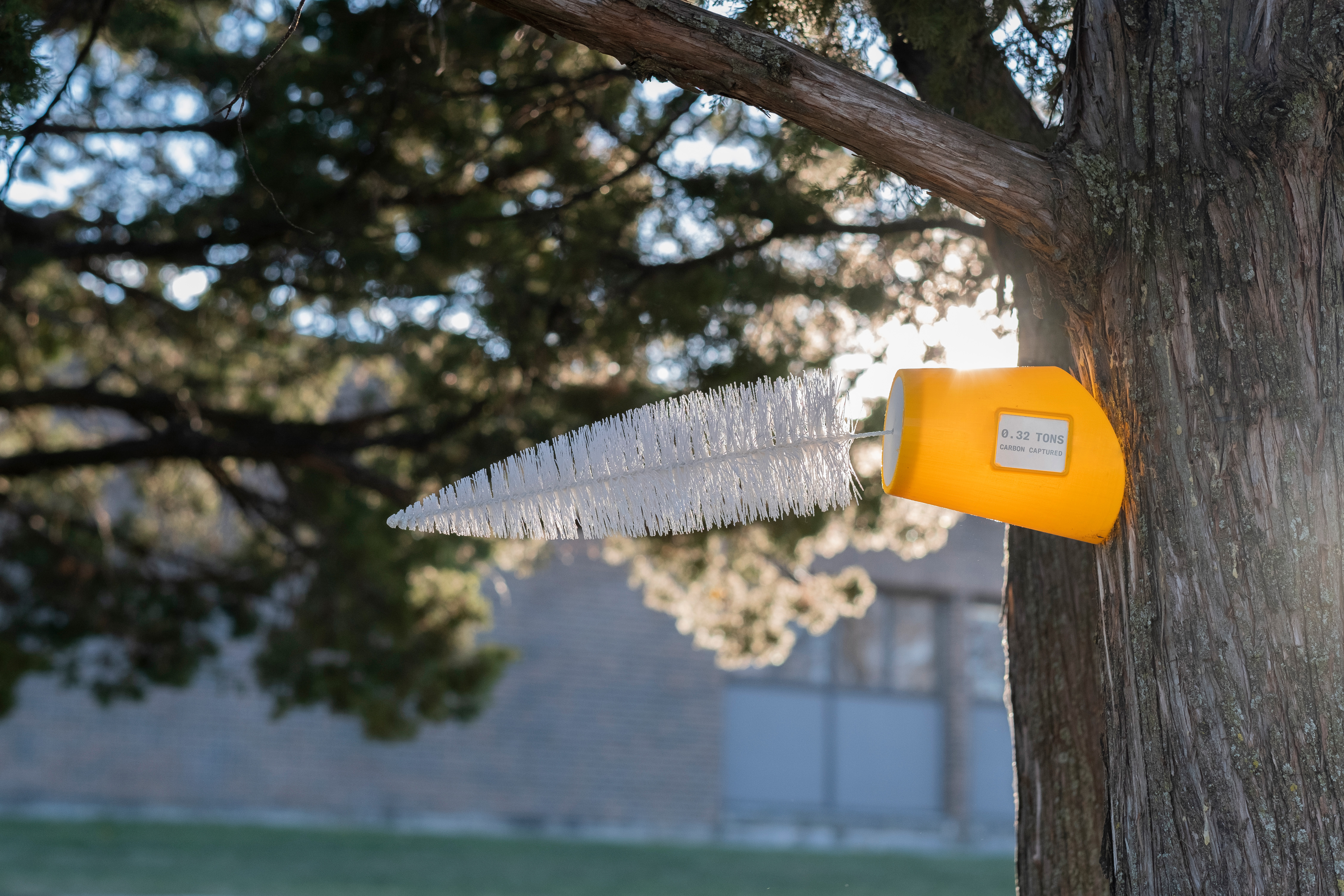


Through Metro Test Zones, The Extrapolation Factory is prototyping future imaginaries for the city’s green urban commons with the help of a multidisciplinary group of scientists, public servants, designers and actors. This living experiment uses methods from academic futurism and performative simulation to shape and animate hypothetical city infrastructures and social dynamics 20-40 years from now. Through this process, we're shaping important discussions about how New York's green spaces could look, feel and function differently as a result of the social, technological, ecological, economic and political changes afoot.
In the first of two phases, participants collaboratively envisioned speculative scenarios using futures methods; scanning for disruptors, developing scenarios and visualizing touchpoints. The Extrapolation Factory synthesized and refined the resulting scenarios for use in a public-facing performative simulation. Our group of experts was led by actors as they attempted to embody their future scenarios at The Shed, a performing arts space in the new Hudson Yards development. These live-action simulations took place in a highly interactive custom-built set and invited a public discourse about policy and design of city parks. The Metro Test Zones project demonstrates the value of performative simulation as a necessary step for envisioning social futures, building on a rich history of theatrical prototyping such as Augusto Boal's Theatre of the Oppressed.
In the first of two phases, participants collaboratively envisioned speculative scenarios using futures methods; scanning for disruptors, developing scenarios and visualizing touchpoints. The Extrapolation Factory synthesized and refined the resulting scenarios for use in a public-facing performative simulation. Our group of experts was led by actors as they attempted to embody their future scenarios at The Shed, a performing arts space in the new Hudson Yards development. These live-action simulations took place in a highly interactive custom-built set and invited a public discourse about policy and design of city parks. The Metro Test Zones project demonstrates the value of performative simulation as a necessary step for envisioning social futures, building on a rich history of theatrical prototyping such as Augusto Boal's Theatre of the Oppressed.
Produced by: Elliott P. Montgomery, Chris Woebken
Design Assistants: Heer Mehta, Natalie Tillen, James Ryan Westphal
Actors: Zenzele Cooper, Benjamin Holbrook, John Peery, Jasmine Schutt-VanMeveren, Candance Thompson
Participants: Sam Adelberg, Eduarda Aun, Alisha Bhagat, Wendy Brawer, Clarisa Diaz, Jeffrey Geiringer, Alice Gong, Elizabeth Henaff, Christine Kim, Neba Noyan, Ayodamola Okunseinde, Leticia Oxley, Oscar Salguero, Alice Shay, Tara Smith, Jonas Voigt, Hanna De Vries, Marina Zurkow
Photo credit: Andy Jackson for The Shed
This project was commissioned through The Shed Open Call and supported by a Graham Foundation public programs grant. Special thanks to Jesse Firestone and Claudia Norman.
Design Assistants: Heer Mehta, Natalie Tillen, James Ryan Westphal
Actors: Zenzele Cooper, Benjamin Holbrook, John Peery, Jasmine Schutt-VanMeveren, Candance Thompson
Participants: Sam Adelberg, Eduarda Aun, Alisha Bhagat, Wendy Brawer, Clarisa Diaz, Jeffrey Geiringer, Alice Gong, Elizabeth Henaff, Christine Kim, Neba Noyan, Ayodamola Okunseinde, Leticia Oxley, Oscar Salguero, Alice Shay, Tara Smith, Jonas Voigt, Hanna De Vries, Marina Zurkow
Photo credit: Andy Jackson for The Shed
This project was commissioned through The Shed Open Call and supported by a Graham Foundation public programs grant. Special thanks to Jesse Firestone and Claudia Norman.
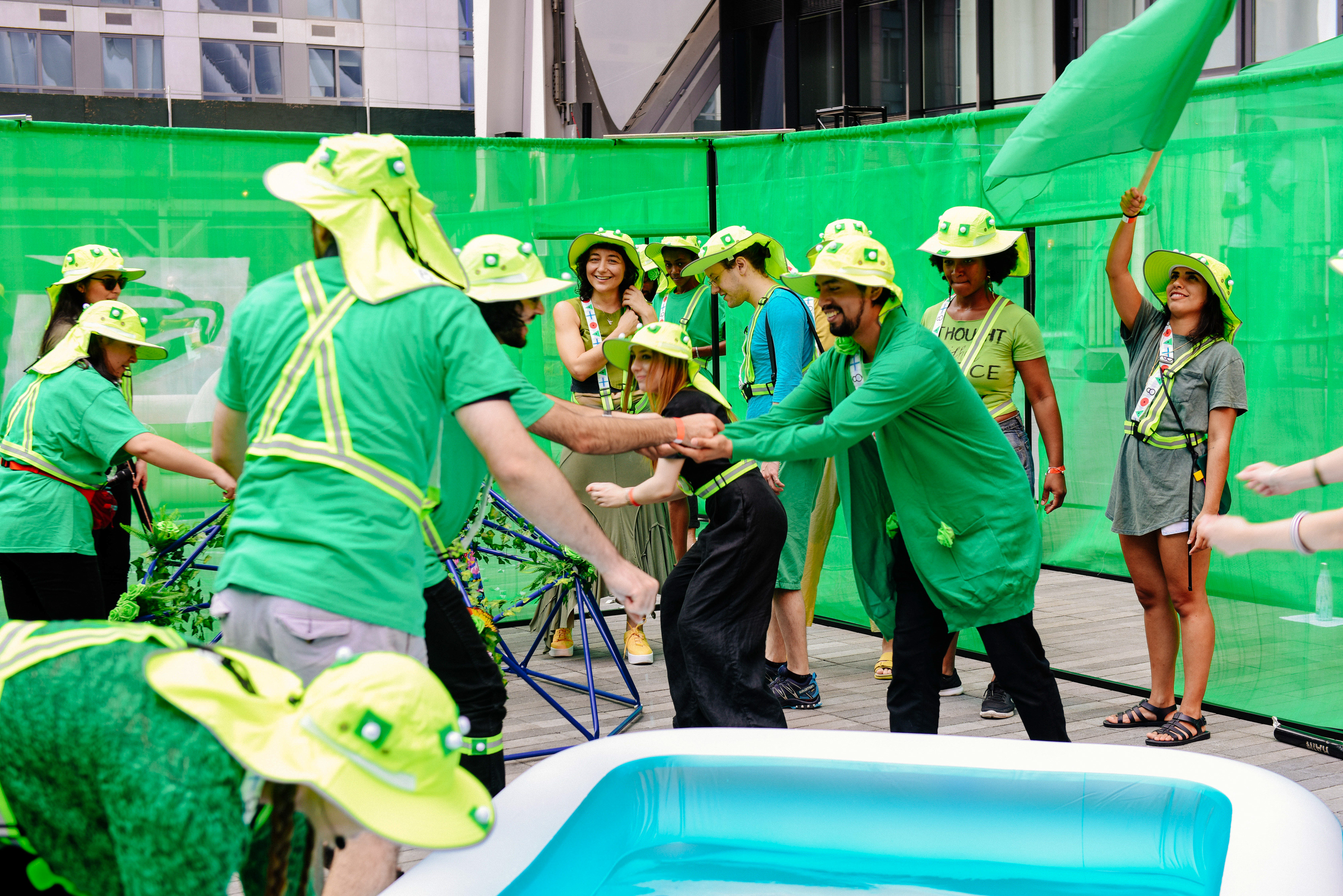

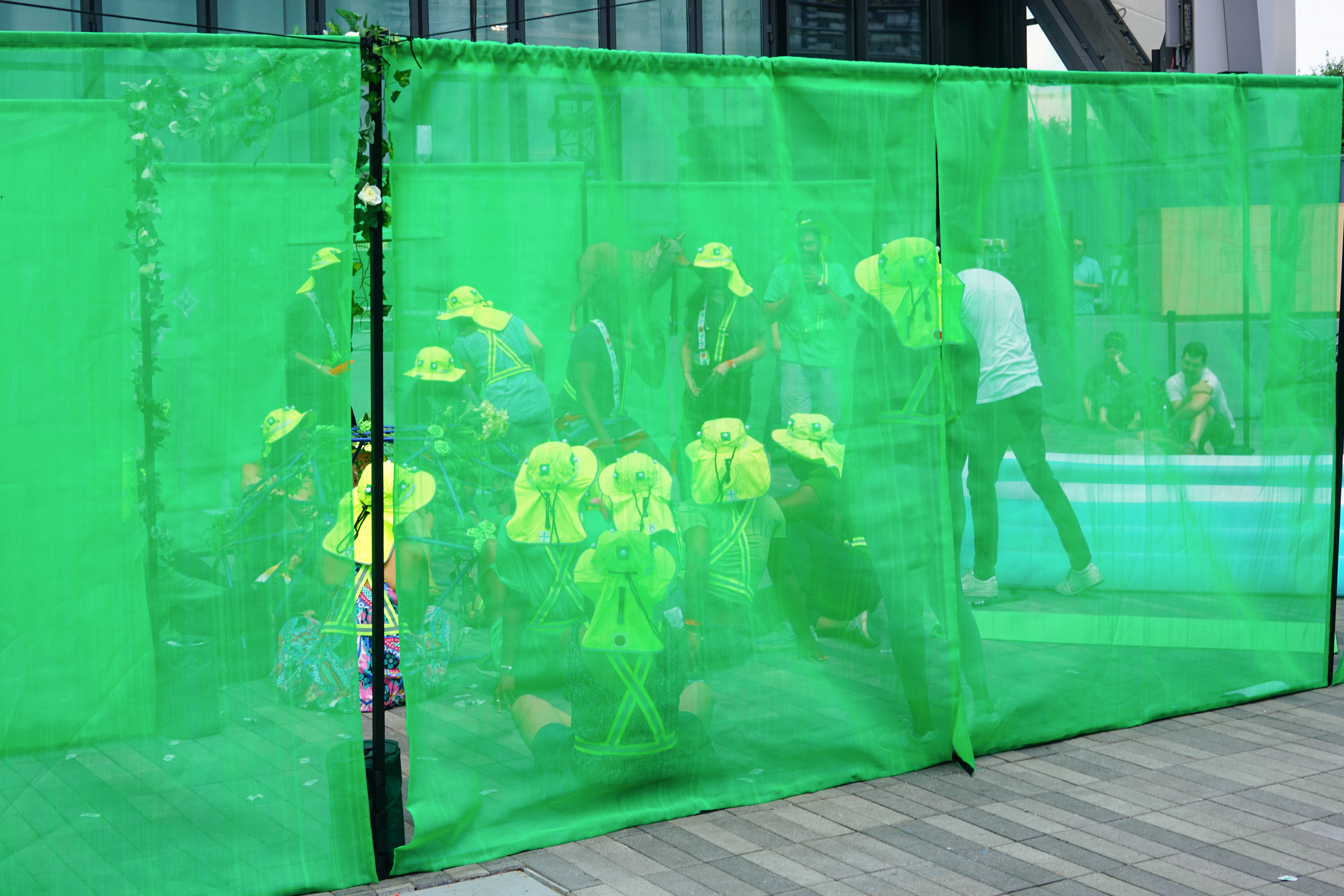


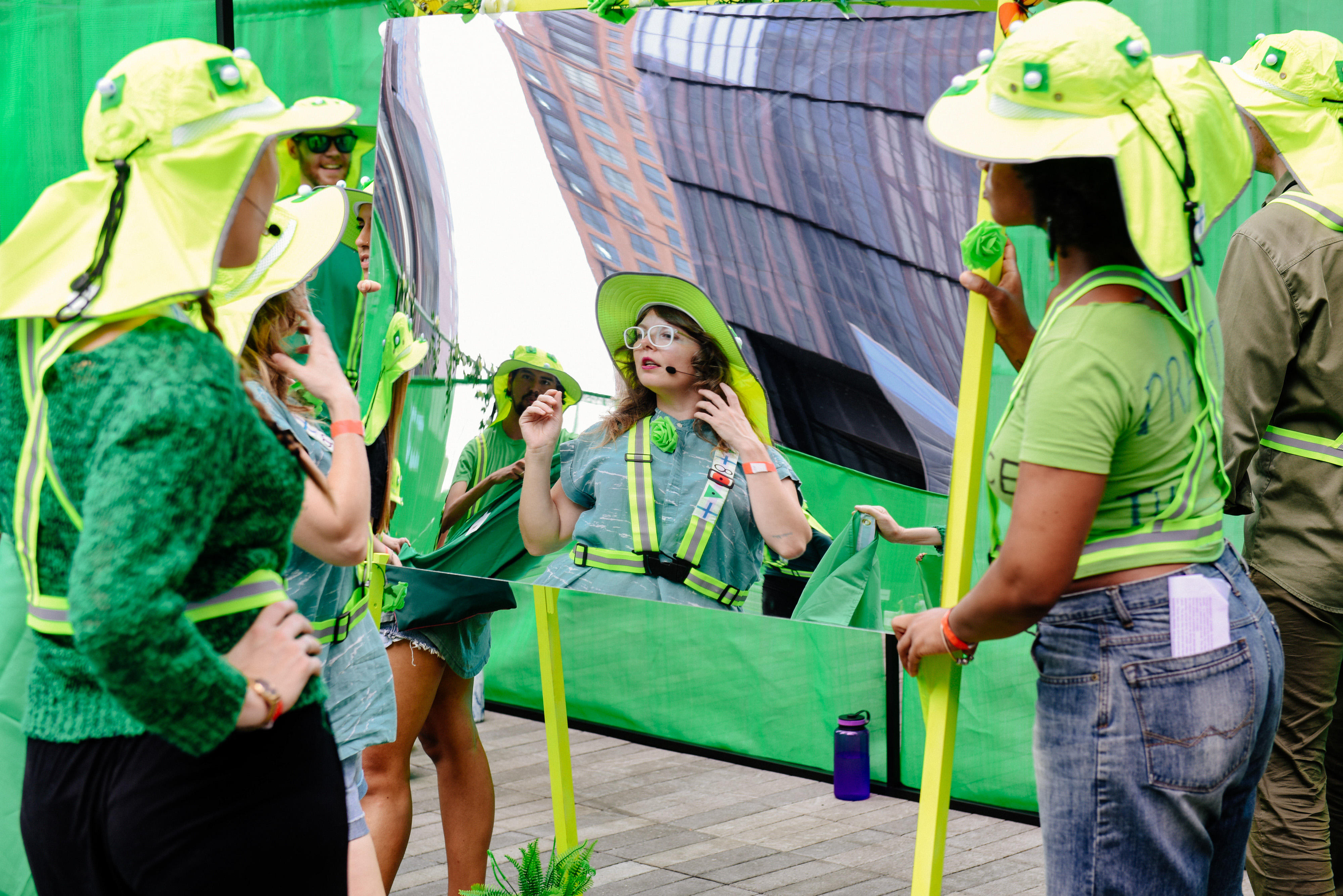
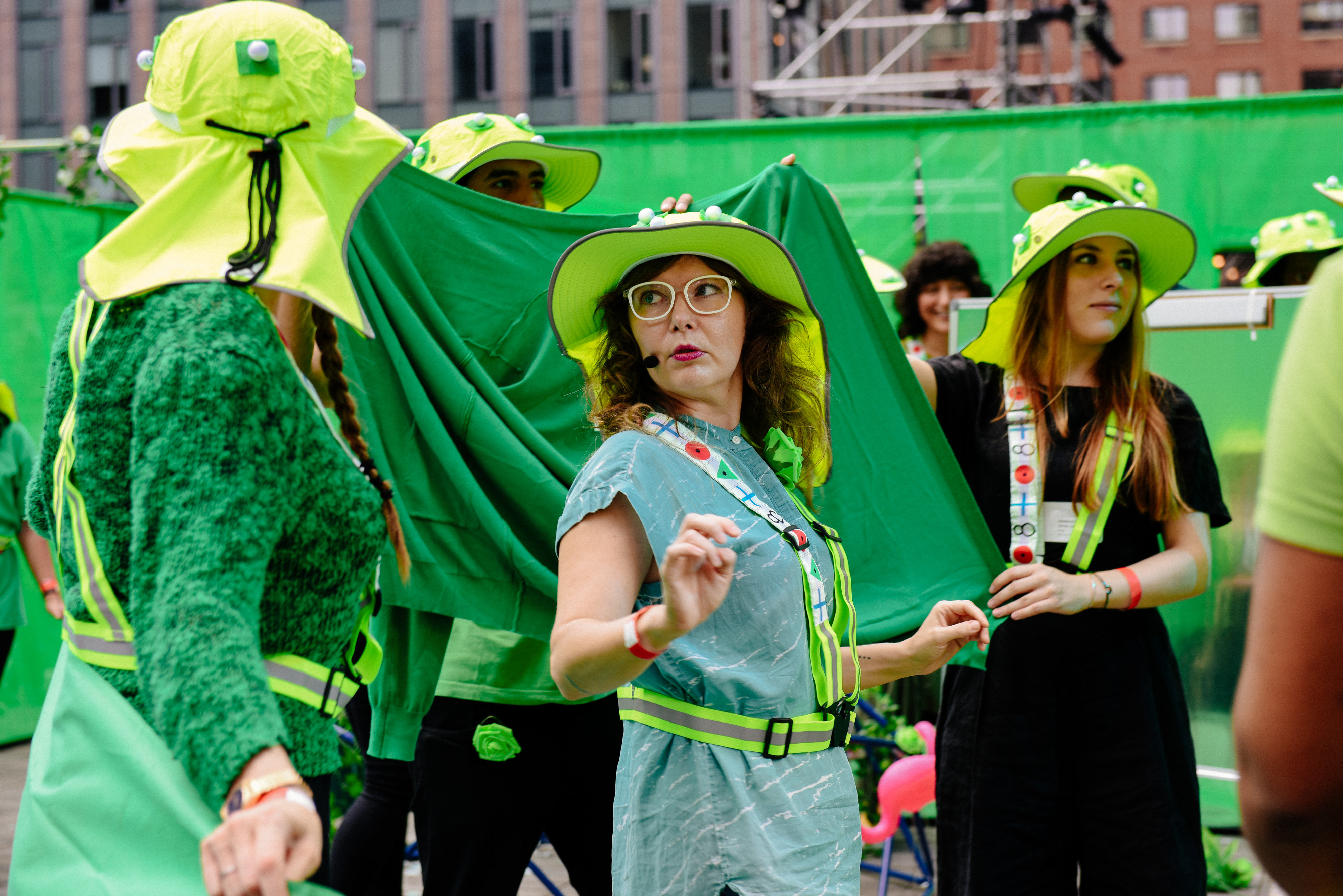
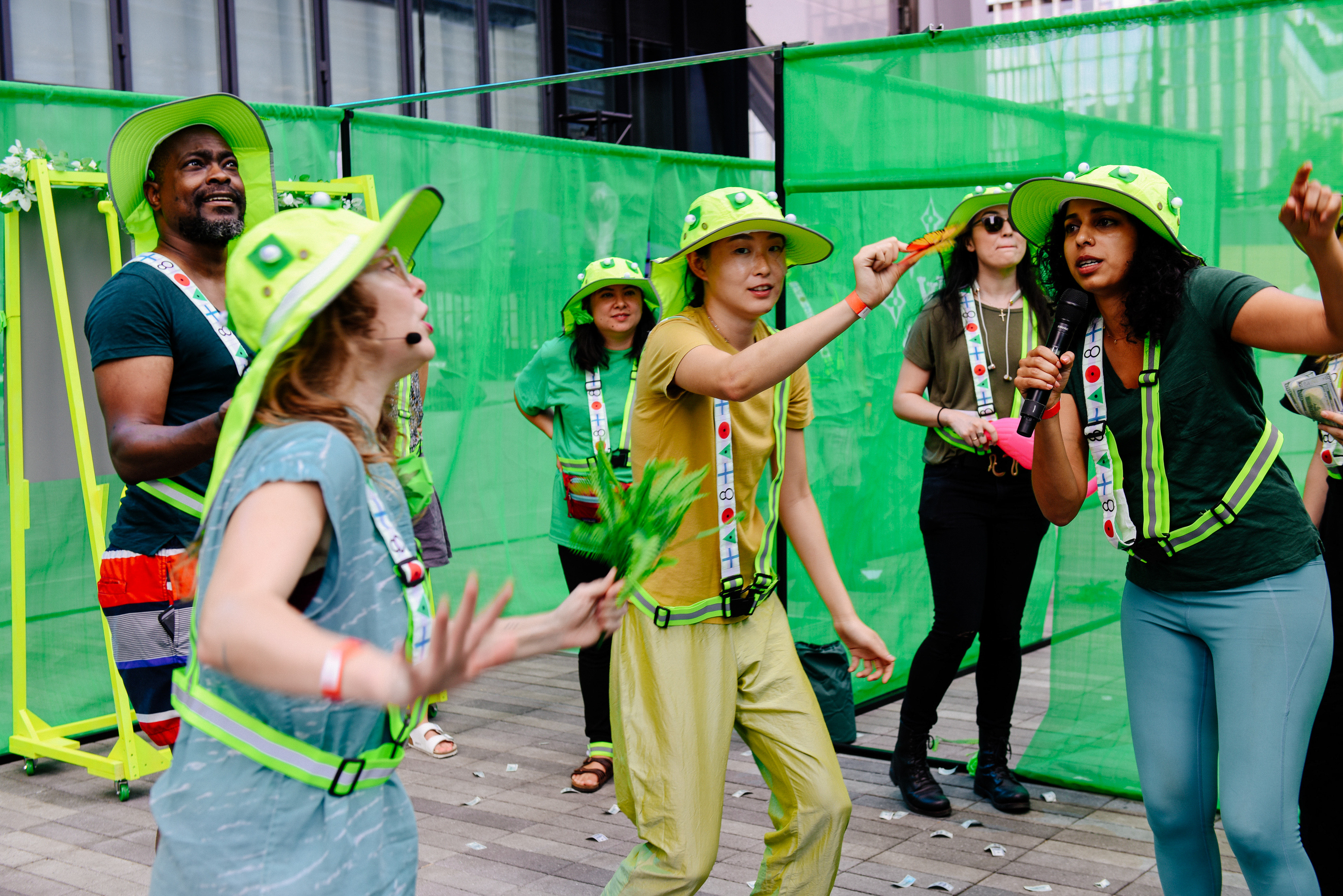

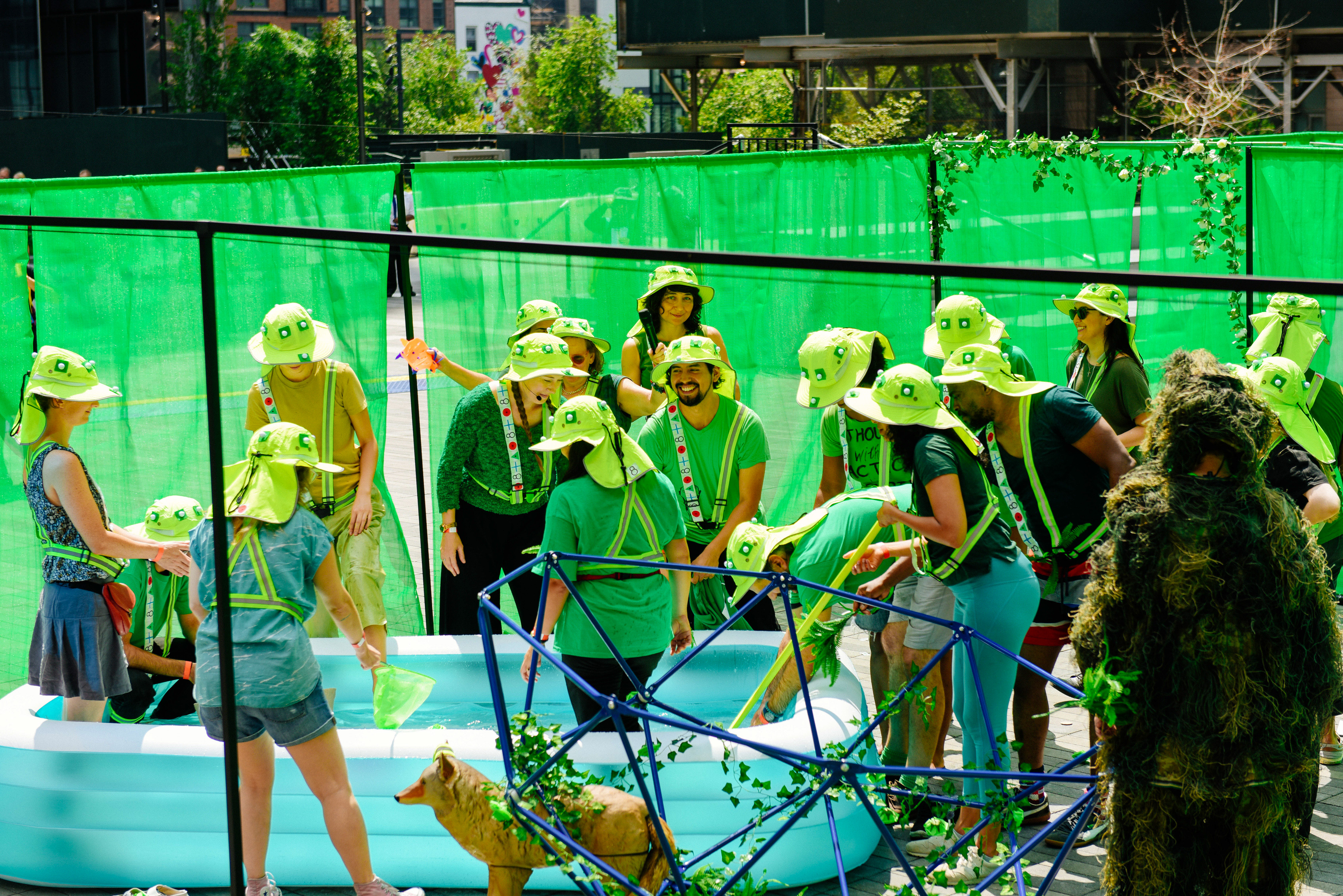

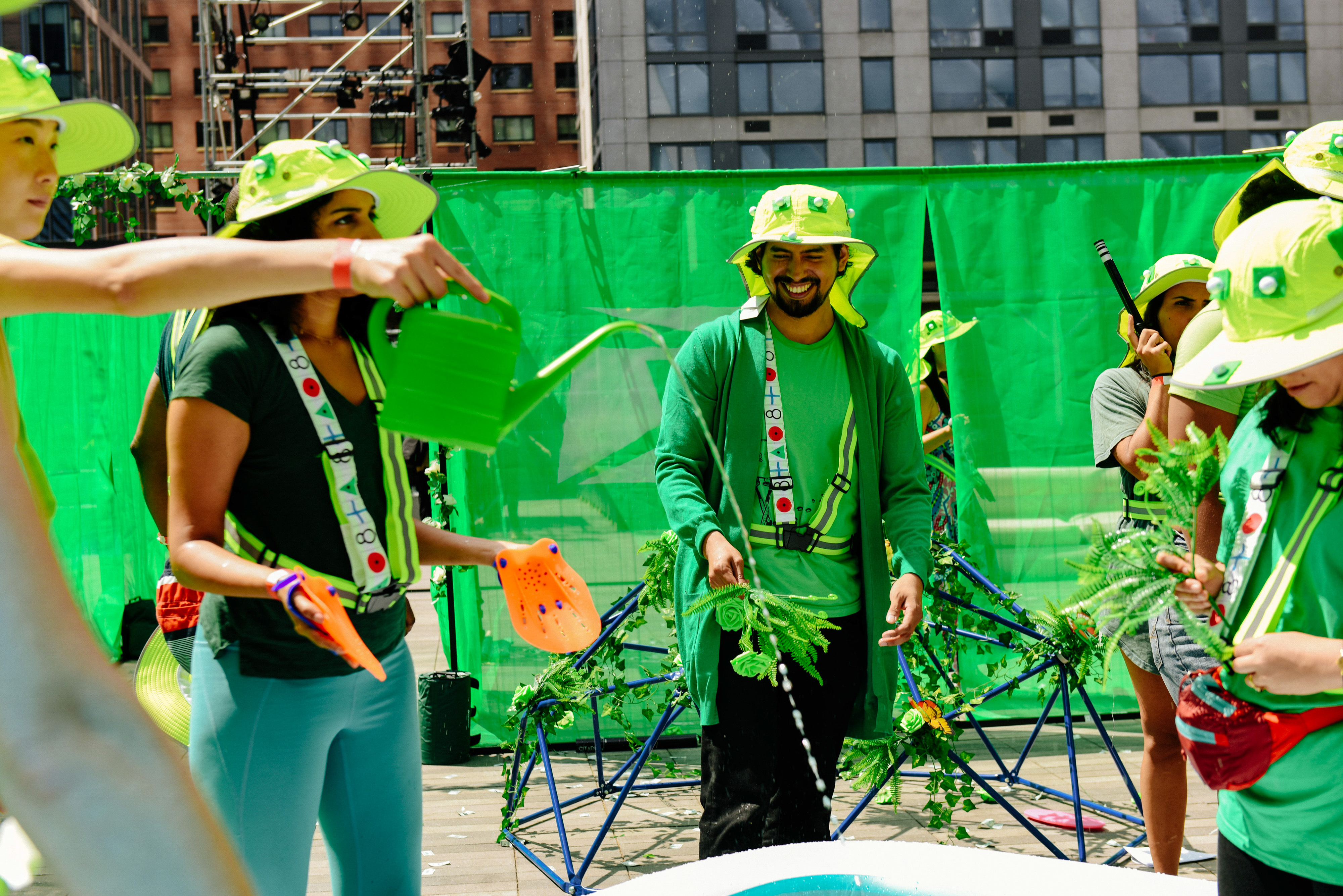
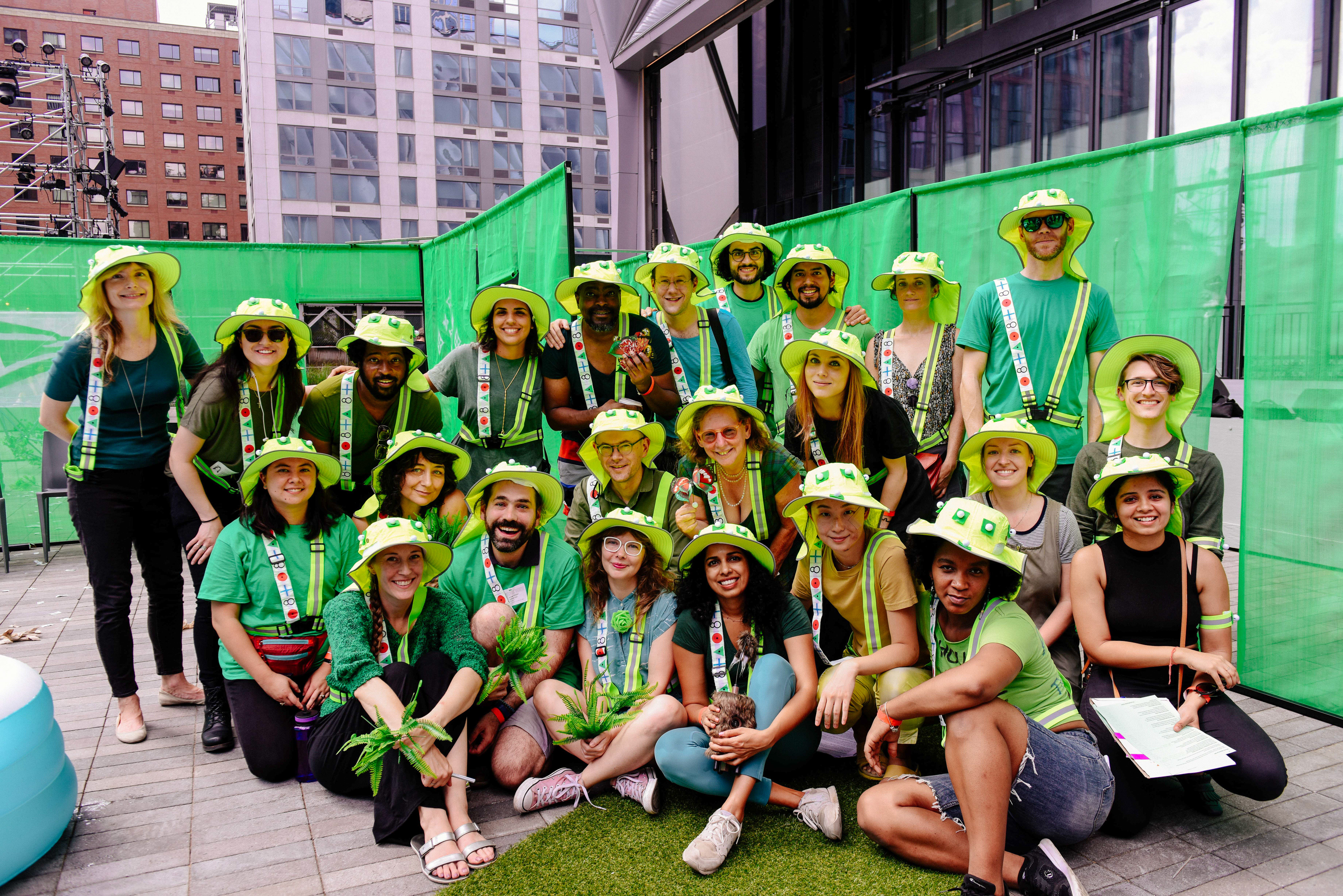
Pull-Tab Alley, 2018

For years, urbanites have co-opted public surfaces as unsanctioned message boards by posting pull-tab ads selling or seeking various things. On the evening of July 29th, 2018 we transformed Cortlandt Alley into an analog messaging board from the future, covered in pull-tab postings that depict artifacts from hypothetical futures.
The public was invited to create fictional pull-tab advertisements using a custom futuring process, and then leave their vision on the walls of Cortlandt Alley. Mmuseumm’s exhibitions of sociological objects, offered inspiration for stories behind the objects envisioned. The Extrapolation Factory staff will select several pull-tab depictions to be 3-D printed and donated to the Mmuseumm collection.

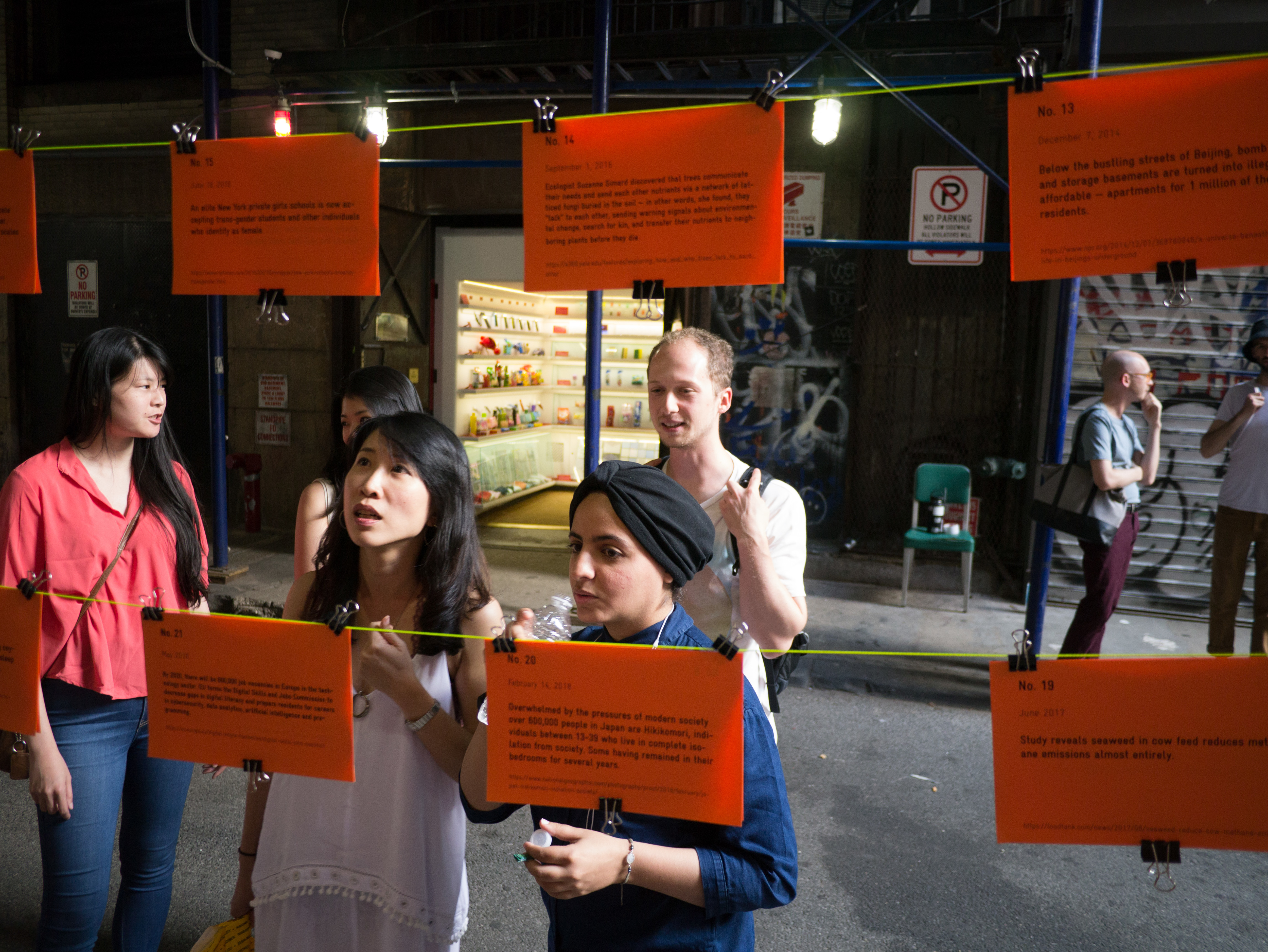
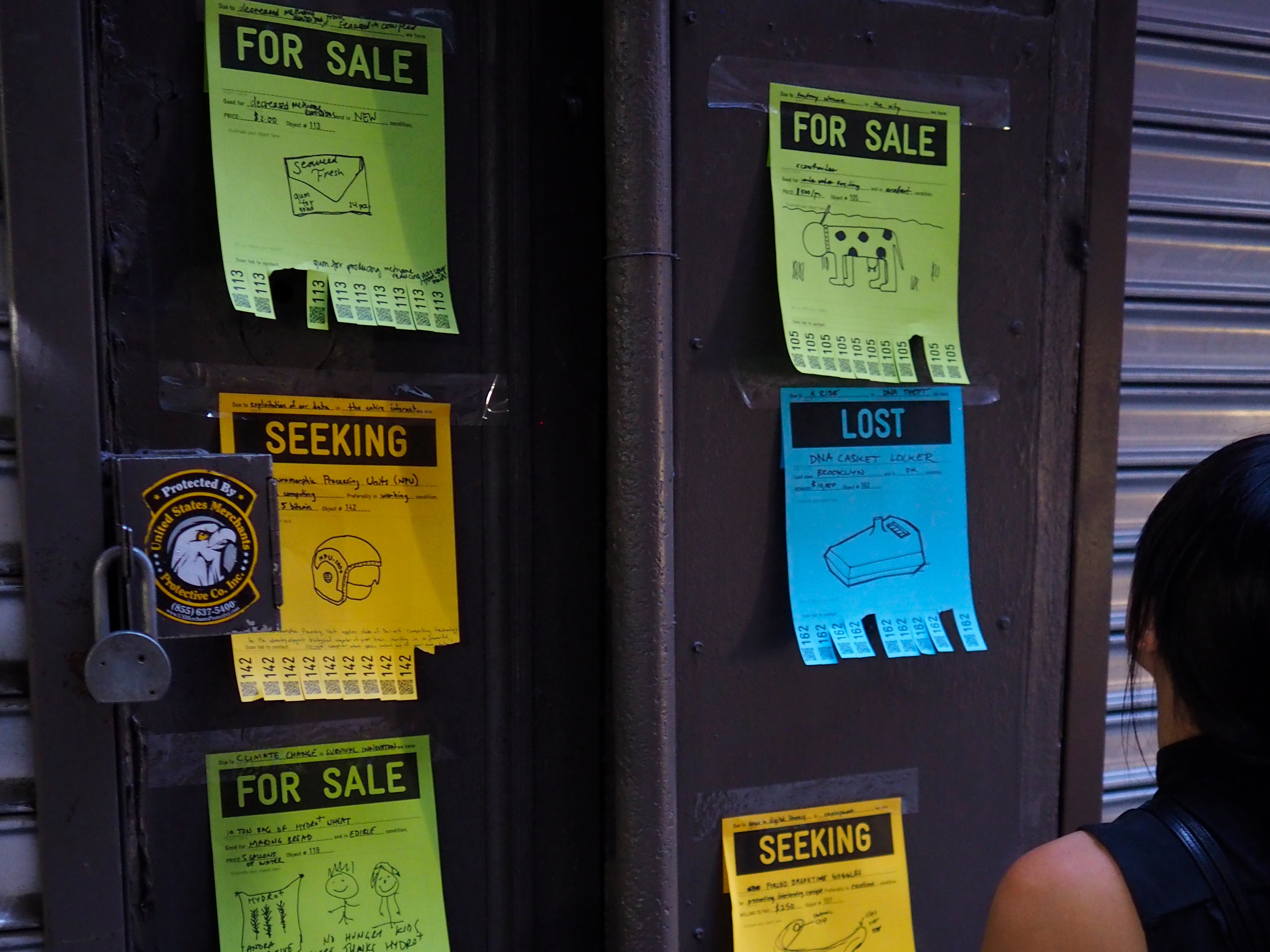

More documentation on flickr.
“What if Columbus” invites members of the public to propose visions for local city infrastructure in Columbus, Indiana. A kiosk installed on the sidewalk where Washington Street meets 2nd Street at an active corner right across from City Hall encourages members of the public to use the kiosk to contemplate, articulate, and share future visions for Columbus. Each vision generated by members of the public, depicted as a short sentence and image, will be digitally shared with the mayor's office with the intention that this database of visions offers decision-makers inspiration and insight into the public's desirable futures.
Comissioned by Exhibit Columbus as part of the ‘Washington Street Civic Projects’
Produced by: Elliott P. Montgomery, Chris Woebken
Design Assitance: Ryan Westphal
Development: Mike Heavers
Photo credit: Hadley Fruits
Drone footage: Brodie Kerst
Fabrication: Ignition Arts
Produced by: Elliott P. Montgomery, Chris Woebken
Design Assitance: Ryan Westphal
Development: Mike Heavers
Photo credit: Hadley Fruits
Drone footage: Brodie Kerst
Fabrication: Ignition Arts

